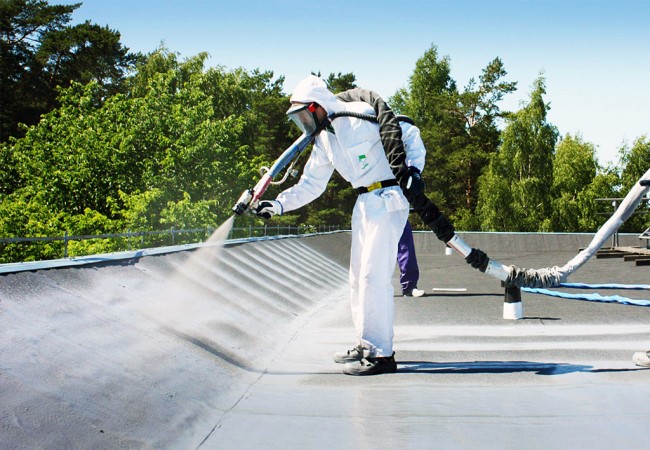Hatay Waterproofing
Owning a home is everyone's dream, and it is better to witness that the foundations of that home are laid before your eyes. However, there are some general waterproofing problems for all buildings and these problems can cause your dream home to turn into a nightmare.
Although water leaks into the building components of the building over time, it causes long-term problems that shorten the life of the building, but it also adversely affects your home comfort. Water Insulation is much more important especially in Hatay, which is one of our provinces with a lot of precipitation.
Whether your application is an old building renovation, a new building's waterproofing, wet space, roof, terrace and basement insulation or dilatation, the wide range of solutions for your choice Construction Chemicals offers you the most suitable solutions.
Unlike traditional products, water and moisture insulation products have special preparation and application techniques. Be sure to work with professional teams who know the products.
Otherwise, the water and moisture insulation products that you provided with great costs may not perform enough performance, or you may face heavy repair costs after possible faulty applications.
There is no such thing as 90% -99.99% in waterproofing. The waterproofing is either 100% or 0%.
In this article, we will talk about four important rules that you must follow to avoid heavy repair costs.
4 rules of waterproofing
1-Ground preparation should be done well, insulation should not be done on solid and non-bearing ground.
2- The right product should be used in the right place
3-Application conditions must be observed
4-Insulation layer should be protected.
So what do these rules mean? Let's examine it together.
1-Ground Preparation;
Mold error: protrusions and corners at the mold joints are the enemy of waterproofing. Such areas do not allow the product to be applied equally in all areas and increase the consumption, which means an increase in cost. However, sharp corners reduce the strength of the product against impacts that may come from the outside. The last thing we would like in waterproofing is tearing of the product or the formation of gaps that allow waterproofing. These areas should be chamfered and sharp corners should be shaved.
Dry Screed: In order to be able to insulate on dry screed, the under screed must be made stronger. For this, materials that will be impregnated with screed concrete should be used. However, it should be noted that cement based waterproofing products cannot be used in impregnated areas. Cement-based waterproofing products reach the capillary spaces in the concrete, fill these areas and crystallize to form a waterproofing layer. Epoxy materials such as polyurethane and polyurea can be used on impregnated surfaces.
Rusty reinforcements: Rusty reinforcements should be removed from the application surface. Rusty reinforced concrete on the concrete surface should be cut up to 2-2.5 cm, its perimeter should be broken and covered with repair mortar.
Segregation: Concrete is a heterogeneous state due to the separation of concrete components such as water, cement, sand and aggregate for various reasons. It usually occurs when using excess water or not good vibration when preparing concrete. Segrated areas should be broken until they reach solid concrete by rigging and then they should be repaired using suitable repair mortars.
PVC pipes (used for mold): PVC pipes in the mold are one of the most favorite areas of water. One of the wrong applications is filling these pipes with cement and plastering them. Cement cannot hold in this area due to the smooth surface of PVC. Since the stresses of cement and pvc are different, cracks occur over time and prepare the ground for water leaks. The application to be made here is to drill the pipe larger than its diameter with a drill and destroy it to a depth of 10-12 cm. Then the gaps should be filled with suitable repair mortars.
Wooden wedge: It is most correct not to use wooden wedges in molds. Thanks to its veins, wood stores and carries water in it and expands and cracks concrete. Before the application, wooden wedges should be either removed completely or disposed to a depth of 10-12 cm. It is recommended to use conical thylot instead of wooden wedges in molds.
Ties: The most common misapplication is to cut ties with spiral at ground level. The anchors should be broken in a conical manner and cut the irons at least 2 cm inside. Then they should be repaired with suitable repair mortars.
Surface cleaning: Surface dust, dirt and mold oil etc. It should be cleaned with pressurized water and detergent. Deeply absorbed oil should be broken and emptied and filled with appropriate repair mortars.
Cracks: Cracks should be expanded a few cm to the left and right and filled with appropriate repair mortars. Attention should be paid to the formation of protrusions on the filled surface. Protruding areas should be rounded, otherwise these protrusions may cause the insulation material to tear. In areas with large and long roofs, an injection should be carried out to strengthen the structural resistance of the building. If there are dense cracks on the entire surface, impregnation should be done.
Cold joints: Cold joints are common in all constructions. Adherence enhancing materials should be used between the foundation and the curtain concrete. In areas where cold joints will occur, waterproofing should be done with special tapes.
2- The right product should be used in the right place
The waterproofing of a building covers many areas from the foundation to the roof.
Choosing the right product is crucial for both waterproofing performance and cost.
Products that are UV resistant in areas to be exposed to the sun, flexible in areas with high vibration, bridging bridges in areas where the application area is wide, moist, preventing salt vomiting in areas with salt vomiting, wear-resistant products in places with pedestrian and vehicle traffic. It is possible to reproduce them with examples.
3-Application conditions must be observed
Let's explain what we mean by an example.
Our product has a risk of freezing from + 4̊C. When the product reacts, it starts to evaporate by warming up.
At +30 ̊C and its temperatures, evaporation begins in a shorter time than it should be, and if the product is very hot, the upper part dries quickly and forms a film layer if the air is too hot. The underlying part wants to evaporate, resulting in blisters and punctures. In such weather conditions, if the application is mandatory, the product should be applied in thin layers.
4-Insulation layer should be protected
Perhaps the most important issue is the protection of the insulation layer. Even if you have done your floor preparation correctly and used the right product in the right place under the appropriate weather conditions, if you cannot protect the insulation layer, all your labor and expenses will be wasted.
Water tends to find weak spots as a structure. If it cannot protect the insulation layer and puncture-tear occurs, the water turns to these areas and your waterproofing will have no provision.
In floor waterproofing applications, if there is a screed on the insulation layer, in some cases transparent simple nylon, which we call greenhouse nylon, should be laid on the waterproofing layer.
In waterproofing applications in curtain concrete, thermal insulation plates such as XPS EPS are unfortunately made on the waterproofing layer by screwing, and as a result, the waterproofing layer is pierced and our waterproofing becomes unusable. is filled with. Rocks or pointed hard objects emerging from the letter may cause pressure to be pierced by applying pressure to the insulation layer.

